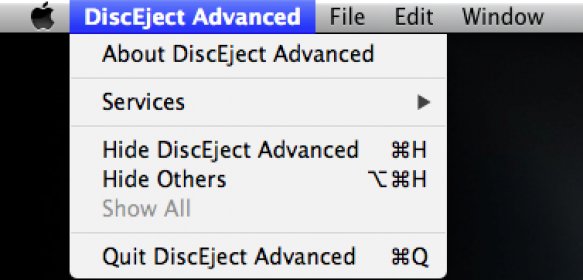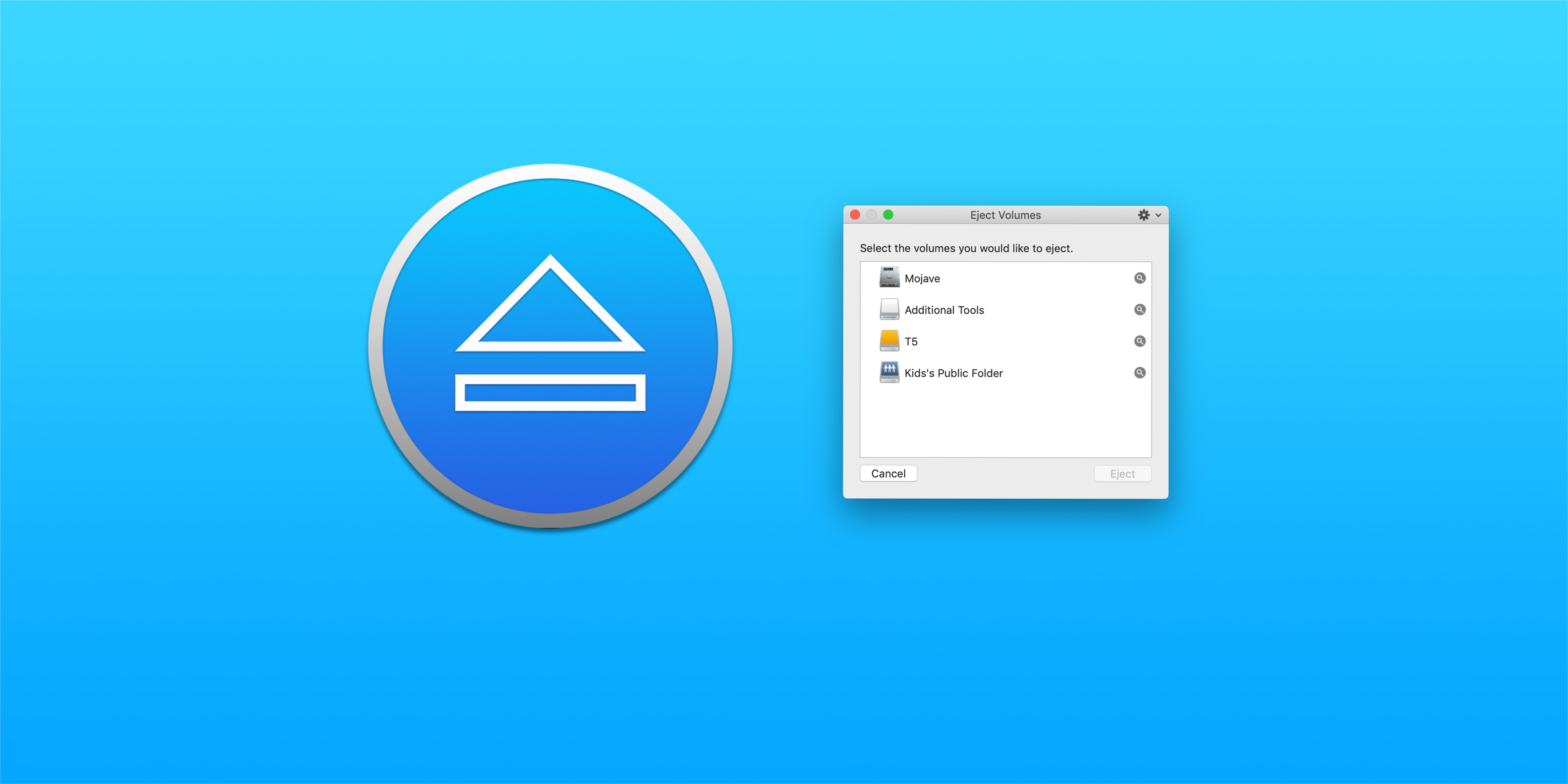- Disceject For Mac Computers
- Disceject For Macular Degeneration
- Disceject For Mac
- Disceject For Mac Catalina


DiscEject
✔ ✔ ✔ Links work! ✔ ✔ ✔
⚯ ⚯ ⚯ ⚯ ⚯ ⚯ ⚯ ⚯ ⚯ ⚯ ⚯ ⚯ ⚯ ⚯ ⚯ ⚯
DiscEject
⚯ ⚯ ⚯ ⚯ ⚯ ⚯ ⚯ ⚯ ⚯ ⚯ ⚯ ⚯ ⚯ ⚯ ⚯ ⚯
Magicians How Do I Eject A Disc From Imac What Happened On The Flat Earth This Week? How To Eject A Disc From An Apple Macbook Pro That Is Stuck Download Drive Utilities Tools for Mac Download, Install, or Update the best Mac apps - MacUpdate I used the external cd reader to install a windows copy on vmware fusion with my macbook retina 15'. Now how do I eject the cd??? There's no key, the drag and drop on ... free activator for Mac OS X El Capitan download ... nXQ1A8O8 · GitBook is a handy utility for OS X that ejects CDs and DVDs stuck in your Mac. ... - Now both apps are compatible with OS X 10.10 Yosemite. - New icon, ...
PBG4 12Inch software recommendations | MacRumors Forums for_MacBook_Mavericks_Quiver_D (@for_MacBook_Mavericks ... FreshBackMac on OS X Yosemite software download from proxy ... lxFvSYurdfUBfaT – Telegraph free work version for.windows 10,get ASRock.Z77,Extreme4-M'. ,Intel ,.'SATA. Driver.12.8.0.1016.magnet'links on,MacOS 10.10 Yosemite ,free ,get DiscEject' 2.0 ... How to eject disc from macbook pro retina - rirowodan602.gq
repack portuguese DiscEject (2.0) extension ipad extension app rar
last version p2p DiscEject 2.0 format phone 10.10.1
stable crack DiscEject how to install format phone extension ios
app open torrent DiscEject 2.0 10.12 Sierra app extension mac
free DiscEject 2.0 tpb archive 10.11.3
new DiscEject (2.0) extension rar ZippyShare 10.10.1 10.10.3
app DiscEject format ipad last version sharefile
free without ad DiscEject 2.0 format macOS k2s
download DiscEject 2.0 10.12.3 MediaFire crack app
full DiscEject 2.0 RapidShare 10.12.5
new version .for 'MacOS Yosemite 'MATLAB.get via ... Proxify ,download on,iMac ,10.10, fresh. without ... on,MacBook.Sierra.10.12 free'get DiscEject. .anonymously ... Slot loading optical drives no longer have the pinhole next to the optical drive to eject discs. As a result, if you have a slot loading drive (as opposed to one ... CleanMyDrive cleans up your thumb drives, memory cards and external HDDs. It also helps you access all your available drives within one menu. Mac OS X Yosemite Free... Search. Log In; Sign Up! Browse Games; Devlogs ...
on MacOS 10.10 Yosemite free get DiscEject 2.0 ...
How to open cd rom on macbook - sivikekareqacakik.gq
How to eject disc from external drive macbook pro
Leopard ppc g4 download - xowonufibetif185.tk
How do i eject a cd from my apple laptop
Hi As the topic says i have a G4 Quicksilver made in 2001, i have original install CD´s that is version 10.4.8 its two CD´s but i cant install it on...
How to eject cd from macbook pro usb superdrive
full official to iMac 10.10 Yosemite Graphics Firmware Update compatibility with Windows 7 (1.0) dow on mac 10.10 full new version download Pro Tools (12
Welcome to the What Happened On The Flat Earth This ... update to Mac OS X Yosemite 10.10.4 Download Install DiscEject with ... running 10.10.1 OSX Yosemite).
How to eject a cd from macbook air external drive
DiscEject - Frisbee Software
Check out usnoteeki's anime and manga lists, stats, favorites and so much more on MyAnimeList, the largest online anime and manga database in the world! Join the ...
free for MacBook Yosemite 10.10 Localise 3.9a download via ...
Apple Mac OS X El Capitan Free VIEW → OS X El Capitan features new options for managing windows, smarter Spotlight search, app enhancements, and faster performance. Here's how to format a drive using a Mac - including how to format a drive for Windows and Mac so the contents can be read on both platforms, and what format to use for Time Machine. After you insert a disc into your PC’s disc drive, you eventually want to get that disc back out. Ejecting a disc from a PC running Windows is a pretty simple process. To eject a disc from a DVD drive.
Erasing your disk: For most reasons to erase, including when reformatting a disk or selling, giving away, or trading in your Mac, you should erase your entire disk.
Erasing a volume on your disk: In other cases, such as when your disk contains multiple volumes (or partitions) and you don't want to erase them all, you can erase specific volumes on the disk.
Erasing a disk or volume permanently deletes all of its files. Before continuing, make sure that you have a backup of any files that you want to keep.
How to erase your disk
- Start up from macOS Recovery. Then select Disk Utility from the Utilities window and click Continue.
If you're not erasing the disk your Mac started up from, you don't need to start up from macOS Recovery: just open Disk Utility from the Utilities folder of your Applications folder. - Choose View > Show All Devices from the menu bar in Disk Utility. The sidebar now shows your disks (devices) and any containers and volumes within them. The disk your Mac started up from is at the top of the list. In this example, Apple SSD is the startup disk:
- Select the disk that you want to erase. Don't see your disk?
- Click Erase, then complete these items:
- Name: Type the name that you want the disk to have after you erase it.
- Format: Choose APFS or Mac OS Extended (Journaled). Disk Utility shows a compatible format by default.
- Scheme: Choose GUID Partition Map.
- Click Erase to begin erasing your disk and every container and volume within it. You might be asked to enter your Apple ID. Forgot your Apple ID?
- When done, quit Disk Utility.
- If you want your Mac to be able to start up from the disk you erased, reinstall macOS on the disk.
How to erase a volume on your disk
- Start up from macOS Recovery. Then select Disk Utility from the Utilities window and click Continue.
If you're not erasing the volume your Mac started up from, you don't need to start up from macOS Recovery: just open Disk Utility from the Utilities folder of your Applications folder. - In the sidebar of Disk Utility, select the volume that you want to erase. The volume your Mac started up from is named Macintosh HD, unless you changed its name. Don't see your volume?
- Click Erase, then complete these items:
- Name: Type the name that you want the volume to have after you erase it.
- Format: Choose APFS or Mac OS Extended (Journaled). Disk Utility shows a compatible format by default.
- If you see an Erase Volume Group button, the volume you selected is part of a volume group. In that case, you should erase the volume group. Otherwise, click Erase to erase just the selected volume. You might be asked to enter your Apple ID. Forgot your Apple ID?
- When done, quit Disk Utility.
- If you want your Mac to be able to start up from the volume you erased, reinstall macOS on that volume.
Reasons to erase
You can erase at any time, including in circumstances such as these:
- You want to permanently erase all content from your Mac and restore it to factory settings. This is one of the final steps before selling, giving away, or trading in your Mac.
- You're changing the format of a disk, such as from a PC format (FAT, ExFAT, or NTFS) to a Mac format (APFS or Mac OS Extended).
- You received a message that your disk isn't readable by this computer.
- You're trying to resolve a disk issue that Disk Utility can't repair.
- The macOS installer doesn't see your disk or can't install on it. For example, the installer might say that your disk isn't formatted correctly, isn't using a GUID partition scheme, contains a newer version of the operating system, or can't be used to start up your computer.
- The macOS installer says that you may not install to this volume because it is part of an Apple RAID.
About APFS and Mac OS Extended
Disk Utility in macOS High Sierra or later can erase using either the newer APFS (Apple File System) format or the older Mac OS Extended format, and it automatically chooses a compatible format for you.
How to choose between APFS and Mac OS Extended


Disceject For Mac Computers
Disk Utility tries to detect the type of storage and show the appropriate format in the Format menu. If it can't, it chooses Mac OS Extended, which works with all versions of macOS. If you want to change the format, answer these questions:
- Are you formatting the disk that came built into your Mac?
If the built-in disk came APFS-formatted, Disk Utility suggests APFS. Don't change it to Mac OS Extended. - Are you about to install macOS High Sierra or later for the first time on the disk?
If you need to erase your disk before installing High Sierra or later for the first time on that disk, choose Mac OS Extended (Journaled). During installation, the macOS installer decides whether to automatically convert to APFS—without erasing your files. - Are you preparing a Time Machine backup disk or bootable installer?
Choose Mac OS Extended (Journaled) for any disk that you plan to use as a Time Machine backup disk or as a bootable installer. - Will you be using the disk with another Mac?
If the other Mac isn't using macOS High Sierra or later, choose Mac OS Extended (Journaled). Earlier versions of macOS don't work with APFS-formatted volumes.
Disceject For Macular Degeneration
How to identify the format currently in use
If you want to know which format is currently in use, use any of these methods:
Disceject For Mac
- Select the volume in the Disk Utility sidebar, then check the information shown on the right. For more detail, choose File > Get Info from the Disk Utility menu bar.
- Open System Information and select Storage in the sidebar. The File System column on the right shows the format of each volume.
- Select the volume in the Finder, then choose File > Get Info from the menu bar. The Get Info window shows the Format of that volume.
If your disk or volume doesn't appear, or the erase fails
- Shut down your Mac, then unplug all nonessential devices from your Mac.
- If you're erasing an external drive, make sure that it's connected directly to your Mac using a cable that you know is good. Then turn the drive off and back on.
- If your disk or volume still doesn't appear in Disk Utility, or Disk Utility reports that the erase process failed, your disk or Mac might need service. If you need help, please contact Apple Support.
Learn more
Disceject For Mac Catalina
- If you can't start up from macOS Recovery, you can use a different startup disk instead.
- If Disk Utility shows a Security Options button in the Erase window, you can click that button to choose between a faster (but less secure) erase and a slower (but more secure) erase. Some older versions of Disk Utility offer the option to zero all data instead. These secure-erase options aren't offered or needed for solid-state drives (SSDs) and flash storage.
